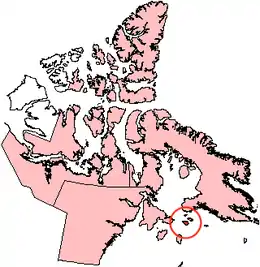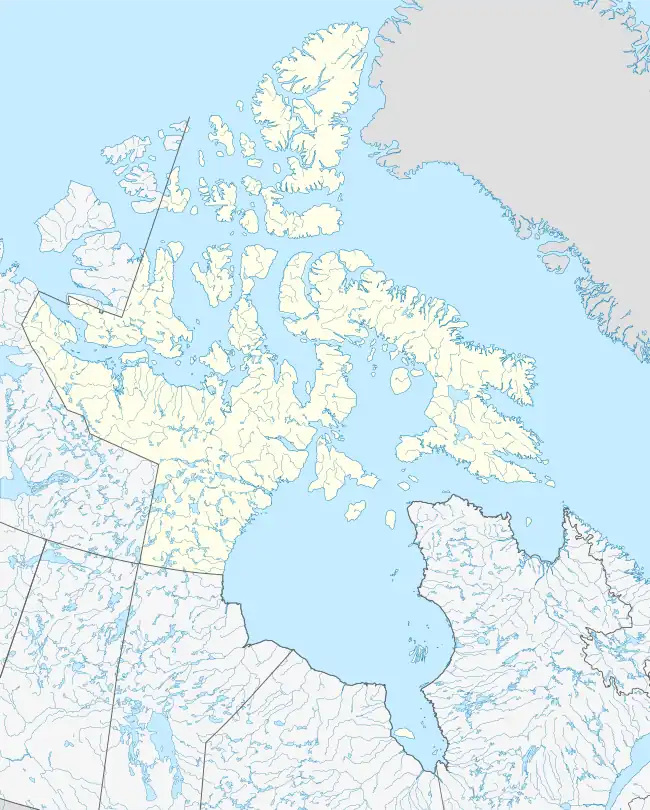Nottingham Island
Nottingham Island (Inuktitut: Tujjaat) is an uninhabited island in the Qikiqtaaluk Region of Nunavut, Canada. It is located in Hudson Strait, just north of the entrance into Hudson Bay.[1]
 Nottingham Island, Nunavut | |
 Nottingham Island  Nottingham Island | |
| Geography | |
|---|---|
| Location | Hudson Strait |
| Coordinates | 63°17′N 77°55′W |
| Area | 1,372 km2 (530 sq mi) |
| Administration | |
Canada | |
| Territory | Nunavut |
| Region | Qikiqtaaluk |
| Demographics | |
| Population | Uninhabited |
History
Nottingham Island was named by the English explorer Henry Hudson in 1610. A weather station was constructed on the island in 1884. In 1927, an airfield was constructed as part of a program to monitor ice in Hudson Bay. The island became uninhabited in October 1970 as Inuit residents migrated to larger towns, primarily Cape Dorset.
Fauna
The island is known for its prominent walrus population.
Notable residents
It is the birthplace of the late Inuit artist Pitseolak Ashoona as well as photographer Peter Pitseolak.
References
- Trémaudan, Auguste Henri de Trémaudan (1916). The Hudson Bay road (1498-1915) (Digitized Jul 10, 2008 ed.). J.M. Dent. pp. 50.
Nottingham Island hudson.
This article is issued from Wikipedia. The text is licensed under Creative Commons - Attribution - Sharealike. Additional terms may apply for the media files.
